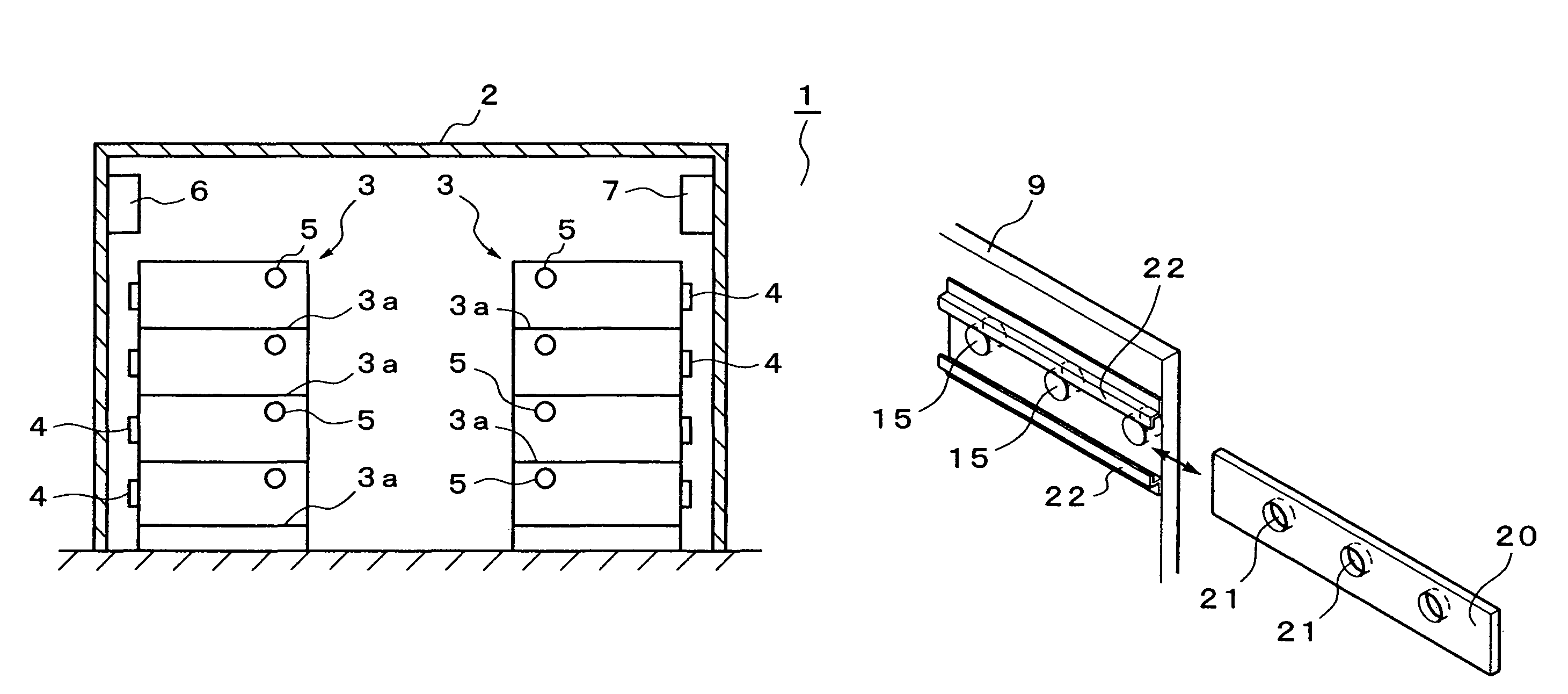Apparatus for producing seedlings and method of producing seedlings
a technology of apparatus and seedlings, applied in the field of apparatus for producing seedlings and a production method, can solve the problems of poor grafting seedlings, no significant growth after fixing planting, and a large labor requirement for management, so as to shorten the seedling production process, reduce initial cost and running cost, and simplify the management
- Summary
- Abstract
- Description
- Claims
- Application Information
AI Technical Summary
Benefits of technology
Problems solved by technology
Method used
Image
Examples
example 1
[0058]Grafted seedlings were produced by grafting tomato scions (name of variety: House Momotaro) to tomato rootstocks (name of variety: Anchor T) using the method of producing seedlings according to the present invention. The conditions of cultivating the stocks were, for both tomato rootstocks and tomato scions, 16 hours / day in photoperiod duration, 25° C. in photoperiod temperature, 25° C. in darkperiod temperature, 270 μmol / m2 / s in luminous intensity in terms of the photosynthesis photon flux density, and 1000 ppm in concentration of carbon dioxide gas.
[0059]The conditions of welding the grafted seedlings after grafting were 16 hours / day in photoperiod duration, 25° C. in photoperiod temperature, 25° C. in darkperiod temperature, and 270 μmol / m2 / s in luminous intensity in terms of the photosynthesis photon flux density. Incidentally, although the hole area rate of the vent holes in the light-transmitting shield was so adjusted to make the relative humidity and the concentration ...
example 2
[0061]Grafted seedlings were produced by grafting cucumber scions (name of variety: Encore 10) to cucumber rootstocks (name of variety: Hikari Power Gold) using the method of producing seedlings according to the present invention. The conditions of cultivating the stocks were, for both cucumber rootstocks and cucumber scions, 16 hours / day in photoperiod duration, 25° C. in photoperiod temperature, 25° C. in darkperiod temperature, 270 μmol / m2 / s in luminous intensity in terms of the photosynthesis photon flux density, and 1000 ppm in concentration of carbon dioxide gas.
[0062]The conditions of welding the grafted seedlings after grafting were 16 hours / day in photoperiod duration, 25° C. in photoperiod temperature, 25° C. in darkperiod temperature, and 180 to 200 μmol / m2 / s in luminous intensity in terms of the photosynthesis photon flux density. Incidentally, although the hole area rate of the vent holes in the light-transmitting shield was so adjusted to make the relative humidity and...
PUM
 Login to View More
Login to View More Abstract
Description
Claims
Application Information
 Login to View More
Login to View More - R&D
- Intellectual Property
- Life Sciences
- Materials
- Tech Scout
- Unparalleled Data Quality
- Higher Quality Content
- 60% Fewer Hallucinations
Browse by: Latest US Patents, China's latest patents, Technical Efficacy Thesaurus, Application Domain, Technology Topic, Popular Technical Reports.
© 2025 PatSnap. All rights reserved.Legal|Privacy policy|Modern Slavery Act Transparency Statement|Sitemap|About US| Contact US: help@patsnap.com



